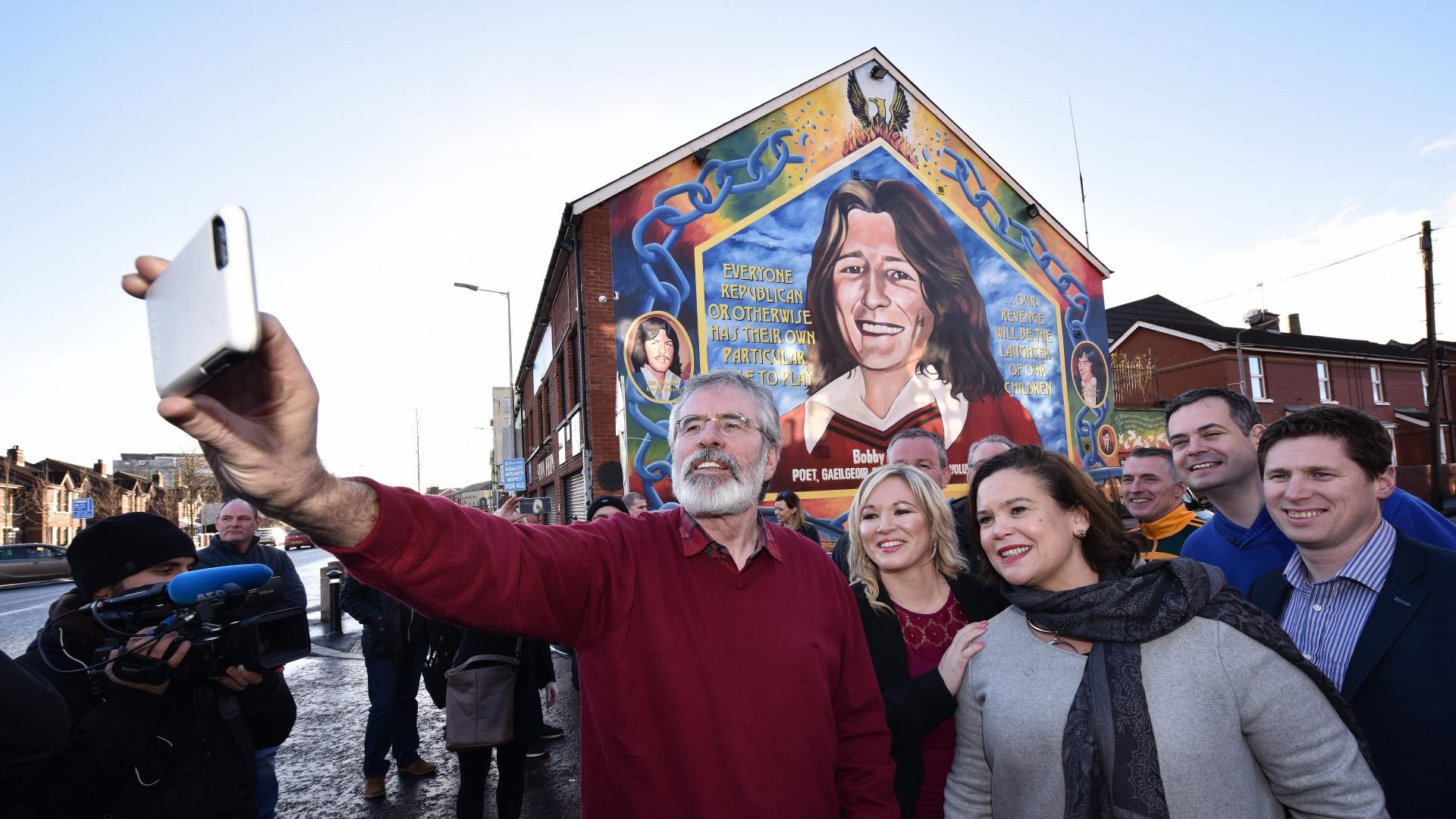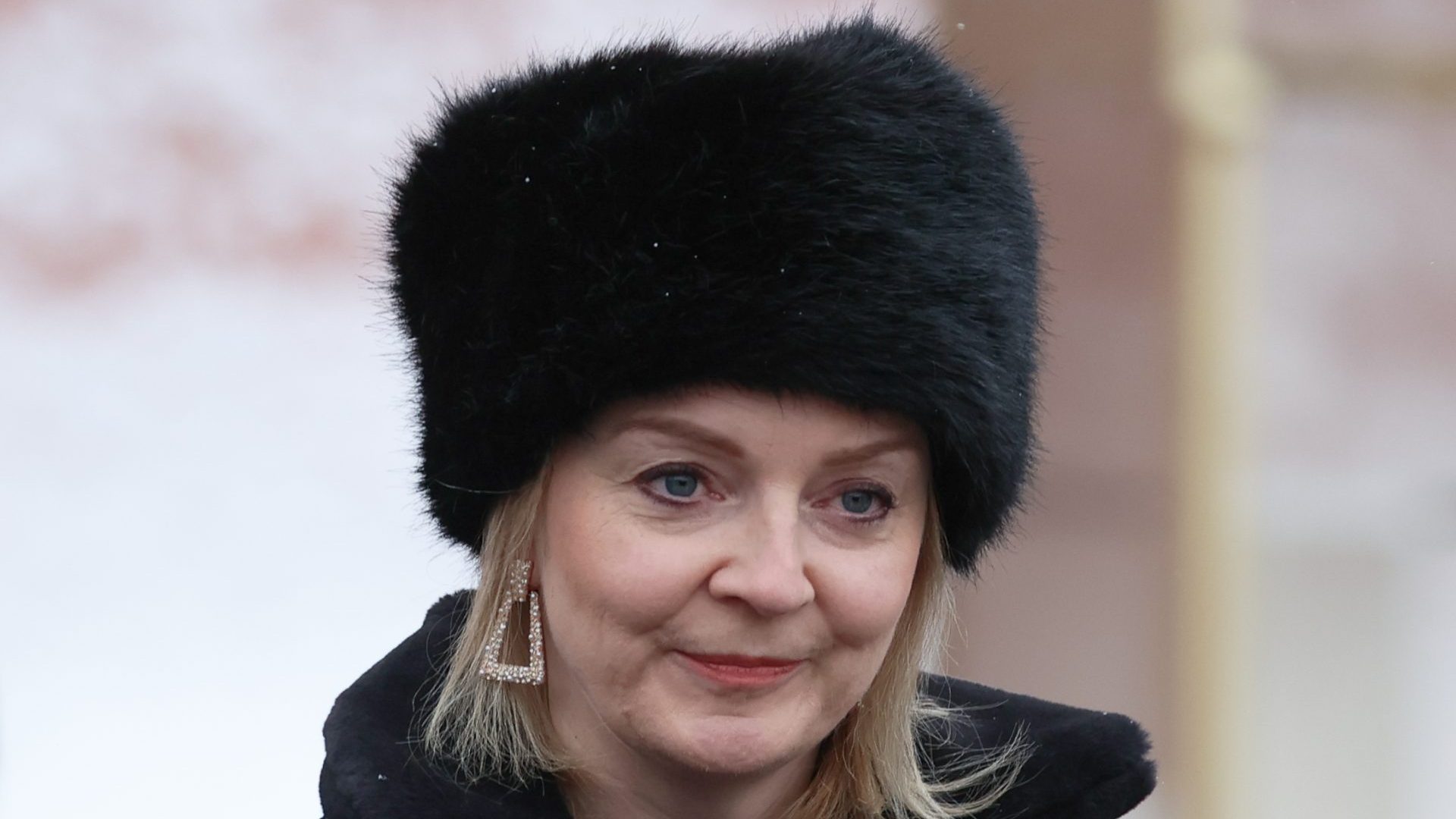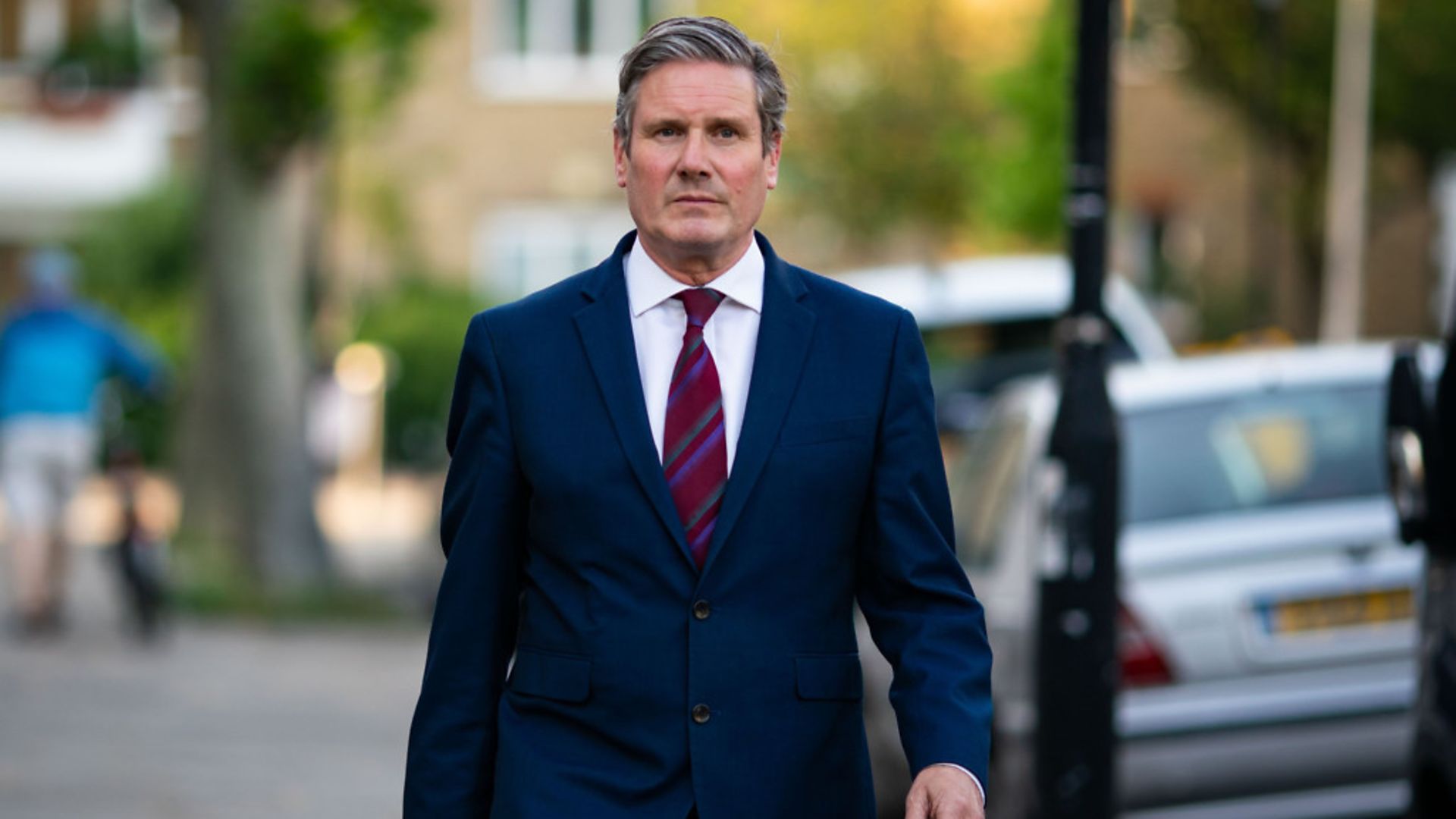On February 14, a lot of Irish people were seeing red – not because of the romance of the day, but because a flagship TV chat show devoted a special episode to the rise of Sinn Féin, enraging both those who support the nationalist party and those who can’t move beyond its past.
Claire Byrne Live featured Sinn Féin voters, activists and critics, but some viewers said the very premise of the show revealed the national broadcaster RTÉ’s bias against Sinn Féin, once best known as the political arm of the Provisional IRA but now growing into a formidable political force that is likely to reshape politics on both sides of the Irish border, and perhaps pave the way to getting rid of the frontier entirely.
“What kind of country do we live in where our national broadcaster can host a debate on why you shouldn’t vote for the opposition??? genuinely can’t believe that’s just happened,” tweeted one viewer, while others wondered if there would be similar shows on the governing Fianna Fáil and Fine Gael. Sinn Féin’s usually verbose leader, Mary Lou McDonald, simply tweeted: “Words fail me.”
The controversial show did reflect an indisputable fact: Sinn Féin is the biggest talking point in Irish politics, having got the jump on other leftwing parties to become the leading voice on social issues such as the housing crisis and the cost-of-living squeeze. It’s also the party of Irish unification and the only all-Ireland party with a presence north and south of the border.
After years of polling in the low- to mid-teens in the Republic, the party once led by Gerry Adams got the most first-preference votes in the 2020 election and is now the main opposition party, with McDonald regularly and expertly tearing strips off the Fianna Fáil-Fine Gael coalition government in the Dáil (parliament).
The fact that a Sinn Féin government is no longer unimaginable is, in itself, a huge change and it’s down to demographics, the relentless passage of time, austerity, Brexit, and a new breed of future-facing, brief-mastering Sinn Féin TDs (Teachta Dála, or MP) who look like ministers-in-waiting. People such as Eoin Ó Broin, who leads on the housing issue.
“There is a real structural realignment taking place in Irish politics and it’s very much a left/right divide and it’s very much a class divide and it’s very much to do with basic costs of living/economic issues … and very little to do with Irish unification and Northern Ireland,” said Aidan Regan, associate professor of political economy at University College Dublin’s school of politics and international relations.
He points to the structural inequalities caused by Ireland’s foreign direct investment growth model, which in turn led to a winnerloser dynamic when it comes to wealth distribution. The ruling coalition can seem blind to the resulting inequities.
Regan reckons Sinn Féin will be the largest party at the next election, due in 2025. Support stands at around 34%, with Fianna Fáil – led by Taoiseach Micheál Martin – on 25% and Fine Gael, led by Tánaiste Leo Varadkar, on 20%, according to recent polls.
Under McDonald, a middle-class graduate and former Fianna Fáil member who took over from Adams in 2018 and has no paramilitary links, Sinn Féin has sought to cast off its past. In many ways, it has been successful – not least because time is passing. In fact, when other parties seek to draw attention to past links with the IRA – such as when Martin recently referred to historical “kneecapping” during a Dáil debate – it is dismissed by many as crude political smearing.
After all, the Troubles – a deceptively quaint term for three decades of brutal murders and tit-for-tat killings that claimed more than 3,500 lives – were already fizzling out in the early 90s and the Good Friday peace agreement was signed in 1998, with the IRA decommissioning its arms over the following years. For many Irish voters, it’s ancient history.
Or nearly. The brutal murder of 21-year-old Paul Quinn, who was beaten to death in 2007 allegedly by members of the IRA, was an awkward moment for Sinn Féin, even if most agree the Republican movement’s leadership did not sanction the killing. It raised the spectre of a past McDonald is striving to erase but that lingers in the minds of many, particularly those who were alive during the Troubles.
Veteran Irish journalist and author Fintan O’Toole recently said: “I can’t vote for Sinn Féin, because I remember too much stuff, that was so cruel, so inhuman. Planting bombs in cafes and pubs just to kill as many young people randomly as you possibly could … I just can’t deal with it, until they’ve dealt with it.”
Slip down the generations, though, and the past is another country.
Take Jake O Rua, a 26-year-old who took part in the Claire Byrne Live show and who lives at home with his mother, votes Sinn Féin and is also a party member. “Time has changed. I live in the present. I don’t live in the past. Right now, it’s working-class people and lower middle-income people that struggle to make a living in this society. What kind of society is that? I’m not going to look at the past when I’m concerned about what’s happening now and what’s happening in the future. Society is a collective effort … we can do better as a society and a people.”
Mairéad Farrell, who was elected in 2020 as one of five TDs for Galway West, epitomises Sinn Féin’s transformation. While she does have a personal connection to the Troubles – her aunt, also called Mairéad Farrell, was a member of the Provisional IRA and was one of three people shot dead by British special forces in Gibraltar in 1988, two years before her niece was born – her reasons for joining Sinn Féin are much more modern.
“When I did my Leaving Cert (A-levels) it was 2008, that was right during the (financial) crisis and you saw how the parties of austerity acted and how they were talking and I saw that difference in Sinn Féin and that drew me to them as well,” says Farrell.
Niall Ó Dochartaigh, a professor of political science and sociology at the National University of Ireland, Galway, says that when he asks his students for their first political memory, many cite the 2008 crash. “That’s a very powerful thing because that shapes your first awareness of the political … so that group, who were deeply affected as children, saw their families’ lives transformed and that was their entry to politics and their levels of support for Sinn Féin are very high, exceptionally high,” he said.
Farrell, who has a BA in history and economics and a master’s in finance, says her Galway West victory came because people were “fed up”, particularly over the housing crisis – both supply and affordability. Rents in Galway County rose by 19% in the last quarter of 2021 and have risen by 8.8% over the last year in the city. The government has put a 2% cap on rents and introduced other measures, but Farrell says they are not working.
“The government needs to actually put a ban on rent increases and through a tax credit they need to put a month’s rent back in renters’ pockets. What I see in my (constituency) clinics is people are coming in and they really have nowhere to go… Almost one-fifth of the population are living below the poverty line when housing costs are factored in,” she said.
So far, so traditional – many countries have seen similar slides away from the centre since the financial crisis – but what makes Sinn Féin unique is its quest for Irish unification. Most agree the prospect is not imminent – there would have to be a border poll in Northern Ireland and a referendum in the Republic – but it no longer seems impossible. Varadkar has said he believes a united Ireland will happen in his lifetime – at last year’s party conference, he said Fine Gael should be proud to say it aspires to this and should establish a branch north of the border.
But for now, Sinn Féin is the only party from the south with its flag firmly planted on that territory. Farrell says Brexit and the Covid pandemic have also reinvigorated the debate.
“People saw first of all with Brexit that the North voted to remain but was dragged out of the EU by a Westminster government. I think that really shocked people… With Covid 19 people were very clear: it’s so obvious, we’re one island, we need to work together to combat this virus… the conversation in terms of Irish unity has really progressed,” she says.
Regan too sees a Brexit effect. “Brexit has ignited a more latent nationalism in the Republic… There’s a kind of dialectic between English nationalism and Irish nationalism. When English nationalism flares up, I think it ignites a latent nationalism in Ireland as well and Sinn Féin have been well placed to take advantage of that,” he said.
In Northern Ireland, analysts say support for unification is growing among Catholic voters, while the main unionist Democratic Unionist party is losing the support of both hardliners and moderates because of its position on the Northern Ireland Protocol, the only way to fit the square peg of the province into the round hole of the UK’s hard Brexit – which the DUP backed – without creating a hard border on the island of Ireland.
With local elections due in May, most polls are predicting a Sinn Féin majority, which would mean that the party’s vice-president, Michelle O’Neill, would become First Minister in the devolved executive, and that, says Ó Dochartaigh, could have a huge psychological impact because it “looks like you have won; it looks like you are the primary representative of opinion in Northern Ireland”.
If Sinn Féin were in charge on both sides of the border, the smart money would have to be on a steady march towards unification, even if that policy objective is not the main reason for the party’s success in the south. What once seemed implausible, now seems not impossible.
For Sinn Féin, it’s all about timing. Or as McDonald said at last year’s party conference: “The most powerful force in the world is an idea whose time has come. It is time for Irish unity.”




